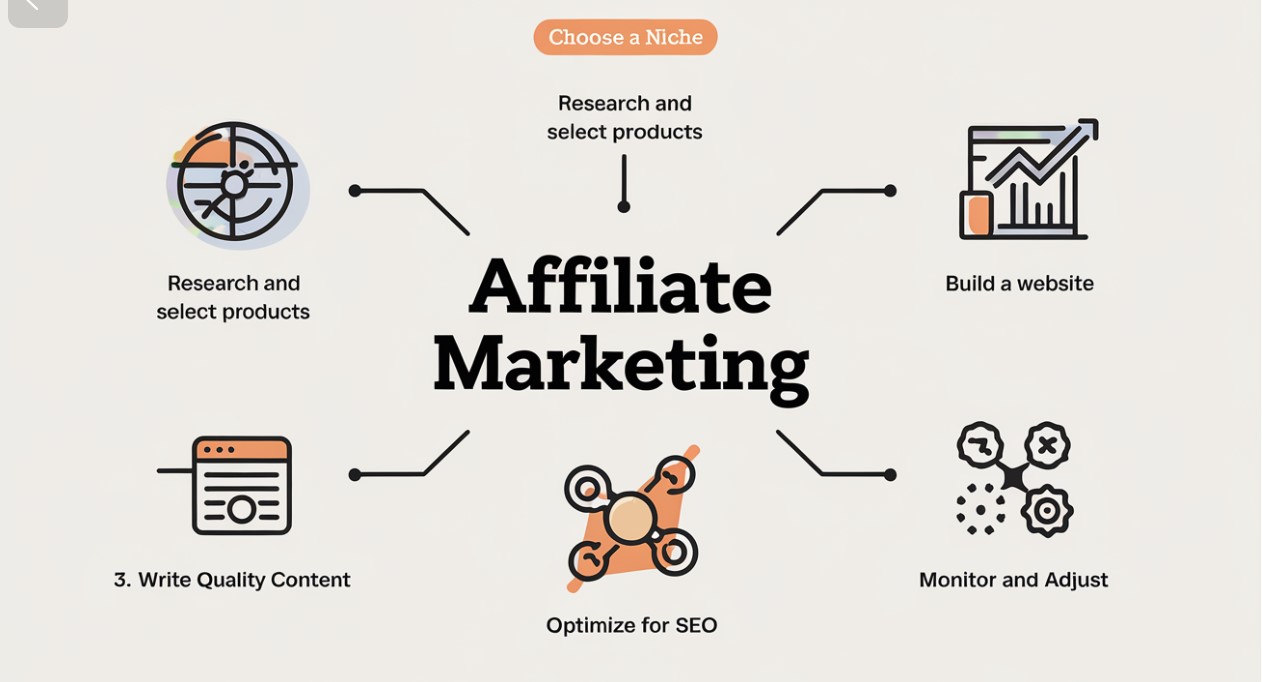Starting an online business is an exciting journey that can lead to financial independence and a flexible lifestyle. With the right guidance, even beginners can successfully launch an online venture. This step-by-step guide will walk you through the essential steps to start an online business and get your venture off the ground.
Step 1: Identify Your Niche
The first step in starting an online business is to identify a niche that aligns with your passion, skills, and market demand. A niche is a specific segment of the market that you will focus on. To find your niche, consider the following:
- Passion and Interest: What topics or activities do you enjoy?
- Market Demand: Use tools like Google Trends and keyword research to identify what people are searching for online.
- Competition: Research your competitors to see if there’s room for your business in the market.
Choosing the right niche is crucial because it will determine your business’s success and sustainability.
Step 2: Conduct Market Research
Once you’ve identified your niche, conduct thorough market research to understand your target audience’s needs, preferences, and pain points. Market research helps you tailor your products or services to meet customer demands effectively.
- Surveys and Polls: Use online surveys to gather information directly from potential customers.
- Competitor Analysis: Analyze what competitors are offering and identify gaps in the market.
- Customer Feedback: Look at reviews and feedback from customers in your niche to understand their likes and dislikes.
Market research is vital for refining your business idea and ensuring that there is a demand for your products or services.
Step 3: Develop a Business Plan
A business plan serves as a roadmap for your online business. It outlines your business goals, target audience, marketing strategies, and financial projections. A well-crafted business plan will help you stay focused and organized as you build your business.
Key components of a business plan include:
- Executive Summary: A brief overview of your business and goals.
- Business Description: Details about your niche, products, or services.
- Market Analysis: Insights from your market research.
- Marketing and Sales Strategies: How you plan to attract and retain customers.
- Financial Projections: Estimated income, expenses, and profitability.
Your business plan should be a living document that you can update as your business grows and evolves.
Step 4: Register Your Business and Domain Name
Once you have a solid business plan, it’s time to register your business. Choose a business name that reflects your brand and is easy to remember. You’ll also need to register a domain name for your website, which will be your online storefront.
- Business Registration: Check the requirements in your state or country for registering a business. You may need to choose a business structure (e.g., LLC, sole proprietorship) and apply for an EIN (Employer Identification Number).
- Domain Name: Choose a domain name that is short, relevant, and easy to spell. Use domain registrars like GoDaddy or Namecheap to secure your domain.
A memorable business name and domain are crucial for building brand recognition.
Step 5: Build Your Website
Your website is the foundation of your online business. It’s where customers will learn about your products or services and make purchases. Building a professional, user-friendly website is essential for success.
- Choose a Website Platform: Use platforms like WordPress, Shopify, or Wix to build your website. These platforms offer customizable templates and easy-to-use tools.
- Design and Layout: Create a clean, intuitive design that reflects your brand. Ensure your website is mobile-friendly and optimized for search engines.
- Content Creation: Develop high-quality content that showcases your products or services, engages visitors, and encourages conversions. This includes product descriptions, blog posts, and multimedia content.
Investing in a well-designed website will help you establish credibility and attract customers.
Step 6: Set Up Payment and Shipping Options
To start selling online, you’ll need to set up payment processing and shipping options. Choose secure and convenient payment gateways to ensure a smooth customer experience.
- Payment Gateways: Integrate payment gateways like PayPal, Stripe, or Square to process payments securely.
- Shipping Options: If you’re selling physical products, set up reliable shipping options. Consider offering free shipping or flat-rate shipping to attract more customers.
Ensure your payment and shipping processes are seamless to avoid cart abandonment and improve customer satisfaction.
Step 7: Launch Your Online Business
After setting up your website and payment options, it’s time to launch your online business. Start by promoting your business through various channels to attract your first customers.
- Social Media Marketing: Use platforms like Facebook, Instagram, and Twitter to promote your products and engage with potential customers.
- Email Marketing: Build an email list and send newsletters, promotions, and updates to your subscribers.
- SEO and Content Marketing: Optimize your website for search engines and create valuable content that drives traffic to your site.
A successful launch will set the tone for your online business and help you gain traction in your niche.
Starting an online business requires careful planning, research, and execution. By following these steps, you can build a solid foundation for your online business and increase your chances of success. Remember, consistency and adaptability are key to growing your business in the ever-evolving digital landscape.





